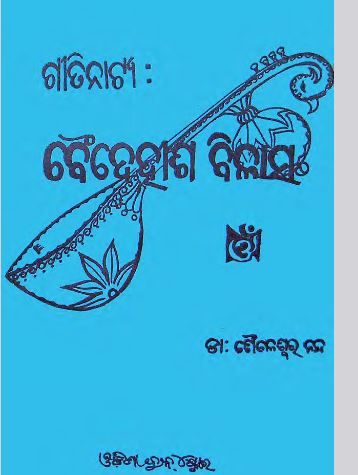In the rich tapestry of Odia literature, some works stand out not just for their narrative prowess but for their ability to transcend time, merging the past with the present in a seamless dialogue. One such work is “Baidehis Bilasa,” penned by the celebrated author Saileswar Nanda and published in 1978. This book is an exquisite amalgamation of form and emotion, taking its inspiration from the timeless tales of the Ramayana, and the poetic elegance of Upendra Bhanja, while embodying the stylistic grandeur of an opera.
“Baidehis Bilasa” draws deep from the well of the Ramayana, which has been a cornerstone of Indian ethos and moral discourse for millennia. The Ramayana, with its intricate portrayal of dharma (righteousness), duty, and human relationships, provides a fertile ground for literary exploration. Nanda, with his deft storytelling, chooses to focus on the character of Sita – often referred to by her epithet Baidehi – providing her with a voice that resonates with both grace and authority.
Sita’s perspective, often subdued in larger epical retellings, is brought to the forefront in “Baidehis Bilasa,” allowing readers to delve into the multifaceted emotions and trials she endures. Her journey is not just physical, as she follows her husband, Lord Rama, through exile and abduction, but also deeply spiritual and emotional. Nanda’s portrayal reflects her resilience, inner strength, and sovereignty, advocating for a broader recognition of her role beyond the archetypal devoted wife.
In alignment with the splendour of classical Odia literature, Nanda channels the ornate and lyrical beauty of Upendra Bhanja’s poetic style. Bhanja, one of Odisha’s greatest poets, is renowned for his lush, intricate use of language, his vivid tableaux of imagery, and his ability to weave complex emotional and philosophical ideas into delicate verses. “Baidehis Bilasa” thus becomes an operatic symphony on the page, where the rhythmic cadences of Upendra Bhanja’s style elevate the narrative. The book is as much about its form as its content, where Nanda’s language dances with rhythm, evocative of Bhanja’s poetic elegance.
“Baidehis Bilasa” can be seen as an opera in literary form. Operas, known for their grandiosity and emotional depth, tell their stories through dramatic music and performance. Nanda’s narrative mirrors this through its dramatic storytelling, where the stakes of emotion are high, each character’s arc pulsating with the vibrancy of an operatic performance. The book demands to be read not just with the eyes but with the soul, inviting readers into an immersive experience where every page sings with life.
Nanda’s work speaks to the timeless human conditions of love, sacrifice, pain, and redemption. It holds a mirror to society’s values and personal dilemmas, asking us to examine our own lives through the lens of Sita’s trials and triumphs. This reflective quality makes “Baidehis Bilasa” a pertinent read even decades after its initial publication.
In conclusion, “Baidehis Bilasa” by Saileswar Nanda is more than just a book; it is an experience that blends the moral gravitas of the Ramayana with the poetic beauty of Upendra Bhanja, all the while orchestrated in the grandeur of an opera. It is a testament to the enduring power of storytelling, a homage to cultural heritage, and an ode to the indomitable spirit of Baidehi, the heroine who continues to inspire across the ages.
Books Info
| Books name | Baidehis Bilasa/ବୈଦେହୀଶ ବିଳାସ |
| Author | Saileswar Nanda |
| No Of pages | 53 |
| Publisher | Orissa Book Store |
| Publication | 1978 |
| Printed At | Bikash Printers |
| Distributor | NA |

